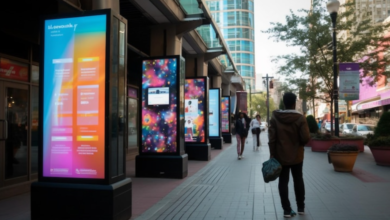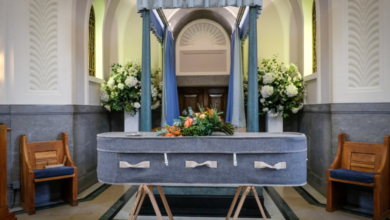
The Allure of Vintage Train Sets: Nostalgia Meets Collectible Craftsmanship
For many, the magic of vintage train sets goes far beyond mere toys or collectibles. These miniature locomotives and cars are a window to the past—an intersection where nostalgia meets exquisite craftsmanship. From the early tinplate marvels of the late 19th century to the beautifully detailed mid-century designs, vintage train sets hold a special place in the hearts of collectors and enthusiasts alike.
In this article, we explore the timeless appeal of antique model train sets, tracing their history, artistic value, and why they continue to captivate generations.
A Journey Back in Time: The Origins of Vintage Train Sets
The fascination with model trains dates back to the late 1800s, during the rise of industrialization and railroads worldwide. As trains became a symbol of progress and adventure, toy makers began crafting miniature versions that captured the imagination of children and adults.
Tinplate Beginnings
One of the earliest and most iconic materials used was tinplate—thin sheets of steel coated with tin, which allowed for durable, shiny, and lightweight toys. Brands like Märklin in Germany and Lionel in the United States pioneered tinplate train production in the late 19th and early 20th centuries.
These trains often featured hand-painted details and mechanical clockwork or electric motors, making them among the first electrically powered toys available to the masses. Tinplate trains had a distinctive charm: their simple construction, bold colors, and lively whistles brought railroads into living rooms around the world.
Mid-Century Marvels: A Golden Era for Vintage Trains
The period between the 1930s and 1960s is often considered the golden age of vintage model train sets. Advances in manufacturing and design saw the rise of more realistic, detailed models that combined both playability and display appeal.
The American Post-War Boom
In the U.S., companies like Lionel, American Flyer, and Marx produced trains in O gauge and S gauge that captured the post-war optimism and consumer boom. These sets were often sold as complete train sets including locomotives, passenger cars, freight cars, track, and accessories such as stations and signals.
What made these models particularly collectible today is their quality craftsmanship and the vibrant cultural nostalgia they evoke. Many families fondly remember these trains running under Christmas trees or forming the centerpiece of home layouts.
European Elegance
Meanwhile, European manufacturers like Märklin, Fleischmann, and Hornby were refining HO scale and 00 gauge trains, which allowed for highly detailed models in a smaller footprint. The shift toward smaller scales made model railroading more accessible, especially in urban homes with limited space.
European vintage trains from this era are noted for their precision engineering, realistic paint schemes, and often metal or brass construction, making them prized among collectors.
See also: Understanding Dystonia: Causes, Symptoms, and Available Treatments
The Artistry Behind Vintage Train Sets
More than just toys, vintage train sets are works of art. Their value is found not only in their age but in the craftsmanship involved in making each piece.
Materials and Manufacturing Techniques
Early vintage trains were hand-assembled and hand-painted, with components like:
- Metal bodies and chassis (often tinplate or die-cast zinc)
- Realistic plastic or metal detailing (smokestacks, rivets, windows)
- Electromechanical motors and whistles
Each train was often a product of skilled labor, and imperfections were marks of human touch rather than mass production errors.
Design and Realism
Vintage trains evolved from stylized toy-like designs to highly accurate scale models. Collectors admire how manufacturers captured the essence of real locomotives—from steam engines puffing billows of smoke to streamlined diesel trains.
This evolution is especially evident when comparing early tinplate trains with mid-century die-cast or brass models. Many of these vintage sets include authentic logos, paint schemes, and accurate proportions, reflecting the manufacturers’ commitment to realism.
Nostalgia and Emotional Connection
Why do vintage trains continue to captivate? For many, it’s about nostalgia—a longing for a simpler time or cherished childhood memories.
- Family Traditions: Many collectors inherited their passion from parents or grandparents who passed down sets that had been lovingly used and maintained.
- Holiday Memories: Train sets are often associated with Christmas and holidays, conjuring images of twinkling lights and joyful gatherings.
- Timeless Play and Display: Whether as a toy or a display piece, vintage trains engage the imagination, inviting owners to recreate journeys of yesteryear.
This emotional connection makes vintage trains more than objects—they become family heirlooms and conversation pieces that tell stories across generations.
Collecting and Preserving Vintage Train Sets
Collectors today approach vintage trains with a blend of passion and respect for their historical and artistic significance.
What to Look For
- Condition: Trains in original paint and with minimal rust or damage are highly prized.
- Original packaging: Boxes, manuals, and accessories add to a set’s authenticity and value.
- Brand and rarity: Early models from manufacturers like Lionel, Märklin, American Flyer, and Marx are particularly sought-after.
- Functionality: Working motors, lights, and whistles increase desirability.
Preservation Tips
- Store trains in climate-controlled environments to prevent rust and warping.
- Avoid harsh cleaning chemicals; gentle dusting and careful lubrication preserve mechanical parts.
- Use archival-quality storage for boxes and paper documents.
Where to Find Vintage Train Sets Today
Collectors can find vintage train sets through several channels:
- Specialty retailers like Trainz.com, which curate vintage and antique model train inventories.
- Train shows and auctions where collectors and dealers showcase rare finds.
- Estate sales and flea markets often have hidden gems.
- Online marketplaces such as eBay, Etsy, and dedicated Facebook groups.
The resurgence of interest in vintage trains has also fostered online communities where collectors share knowledge, trade, and celebrate their shared passion.
Conclusion: The Timeless Appeal of Vintage Trains
Vintage train sets embody a unique blend of history, artistry, and nostalgia. From the charming tinplate models of the late 19th century to the detailed mid-century masterpieces, these trains connect us with the romance of the rails and the joy of childhood play.
Whether you are a collector, a hobbyist, or simply someone who appreciates fine craftsmanship and storytelling through objects, vintage trains offer a fascinating world to explore—one that is as rich in emotion as it is in detail.
So, the next time you see a vintage model train set, remember it’s more than a toy. It’s a beautifully crafted piece of history, a keepsake of memories, and a testament to the enduring allure of the railroad.




